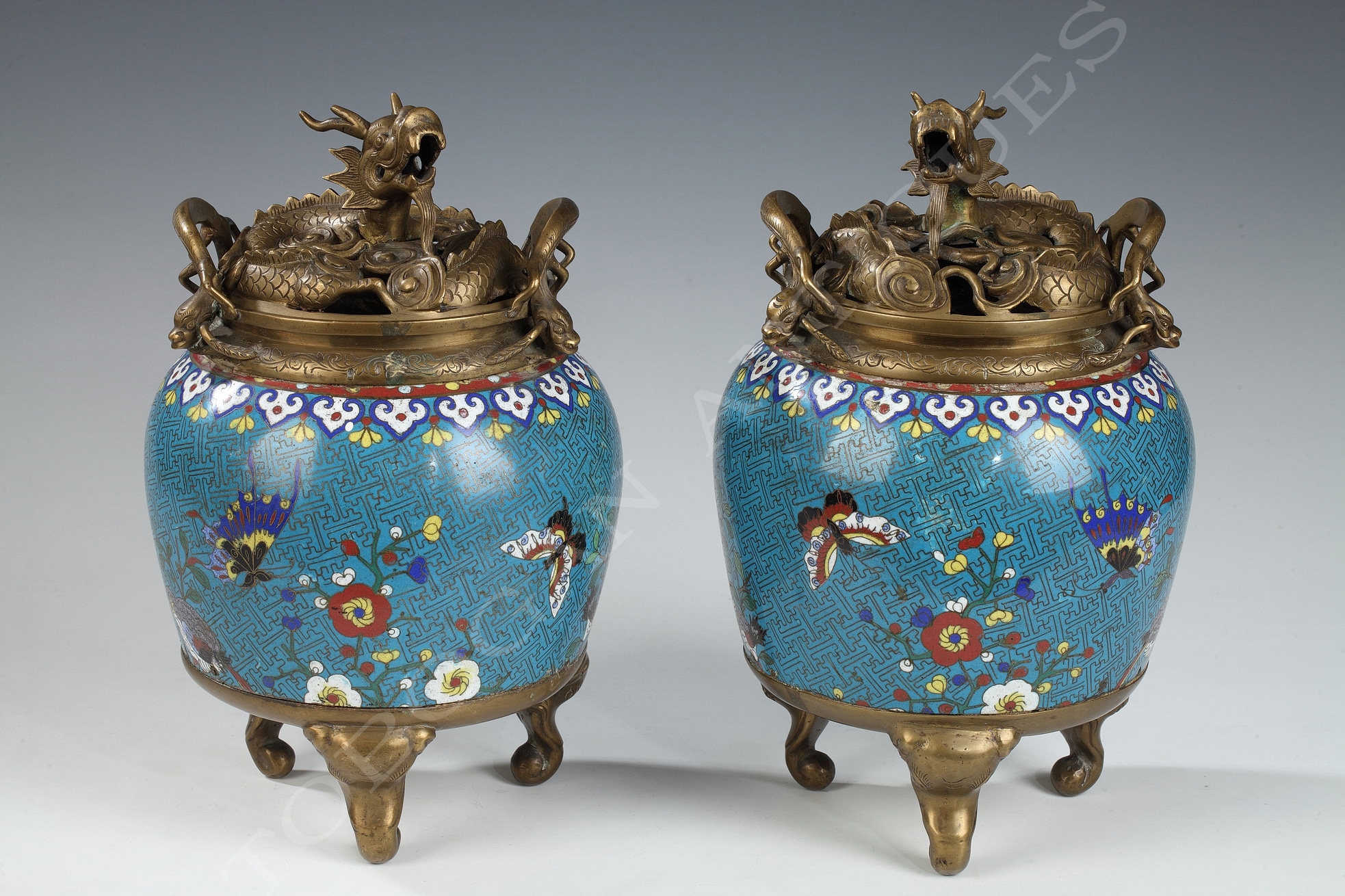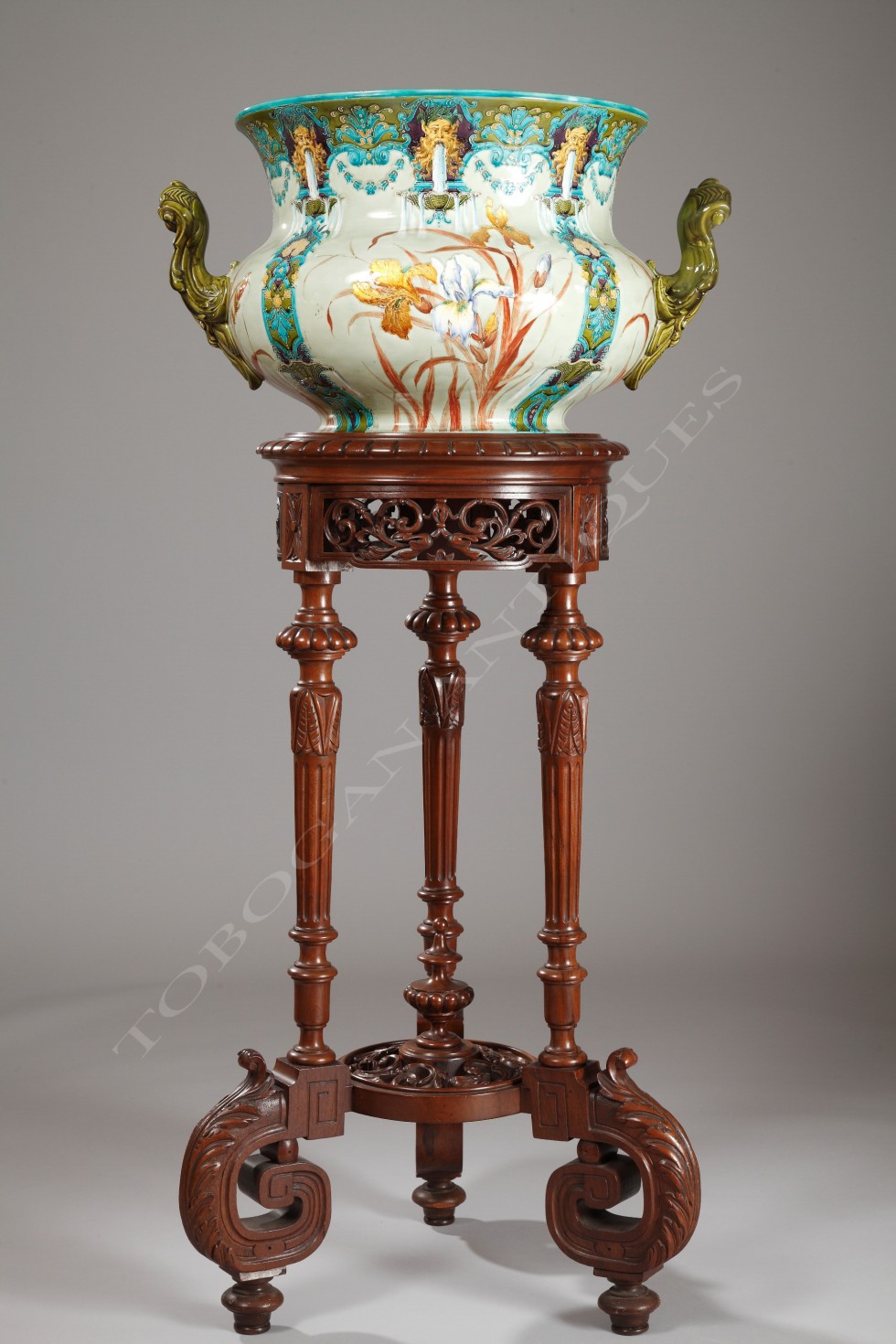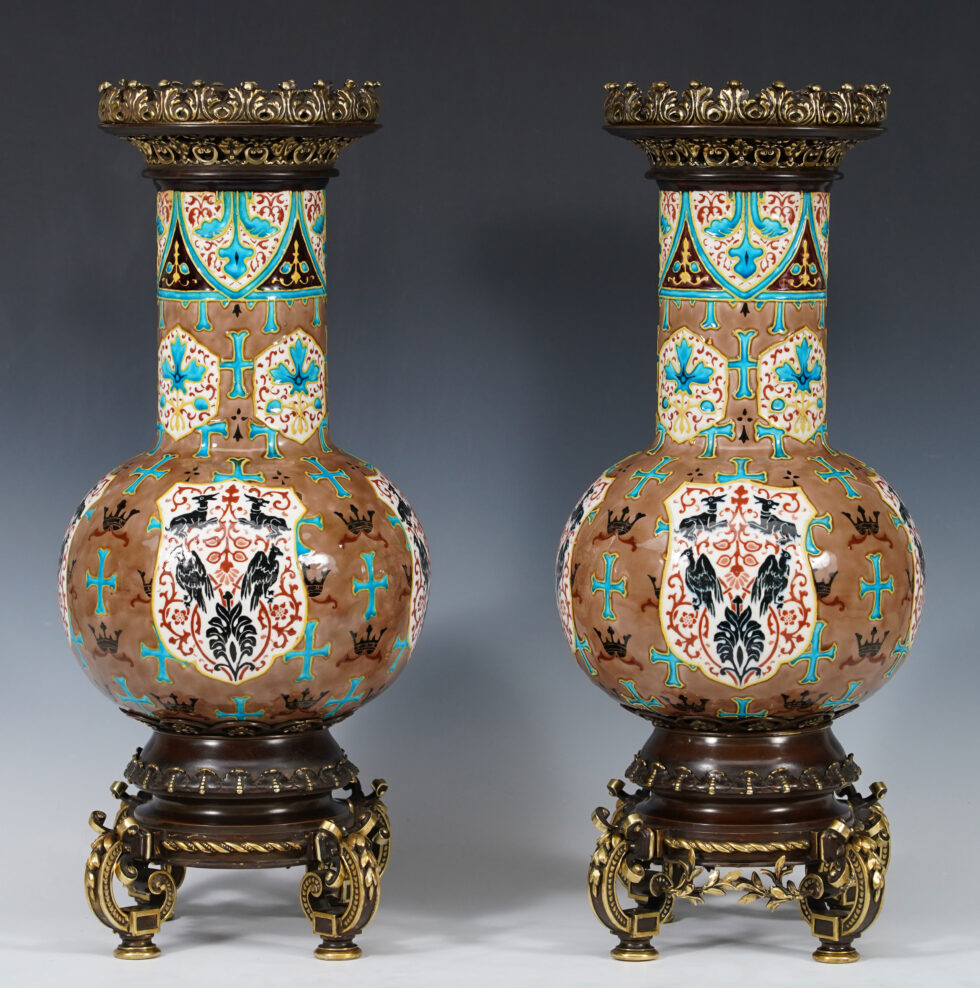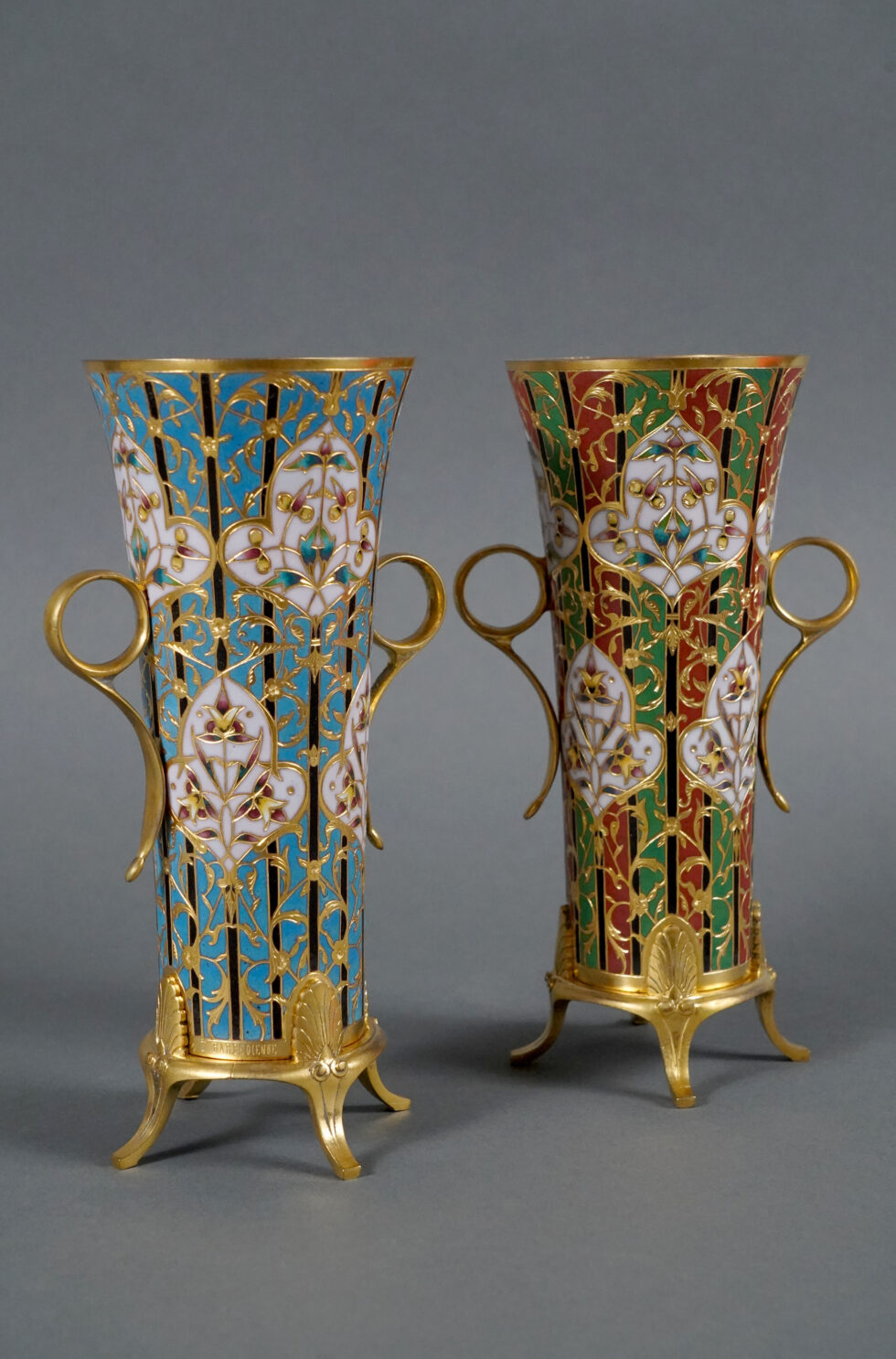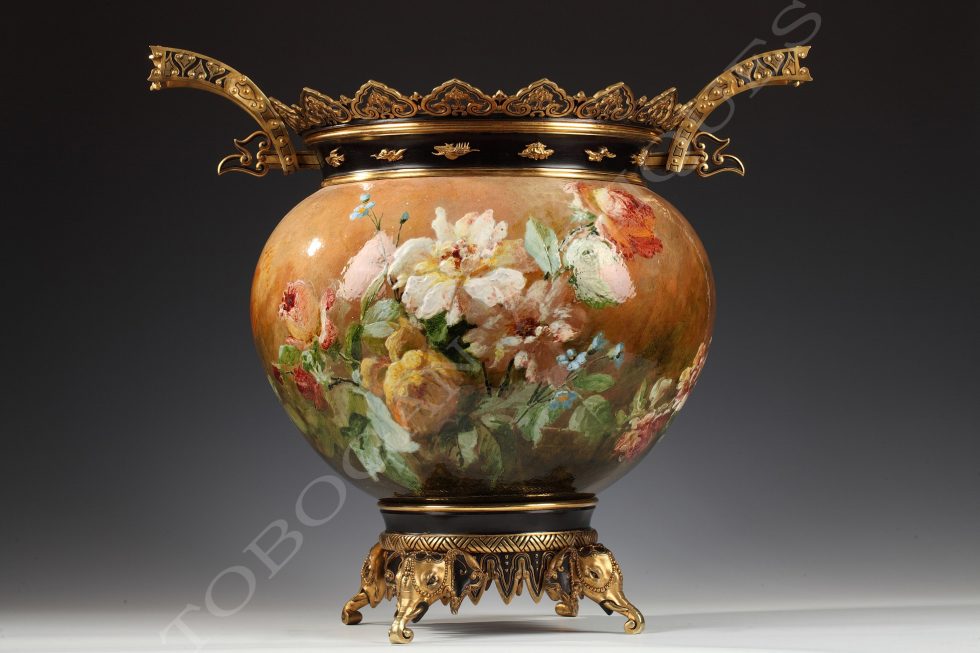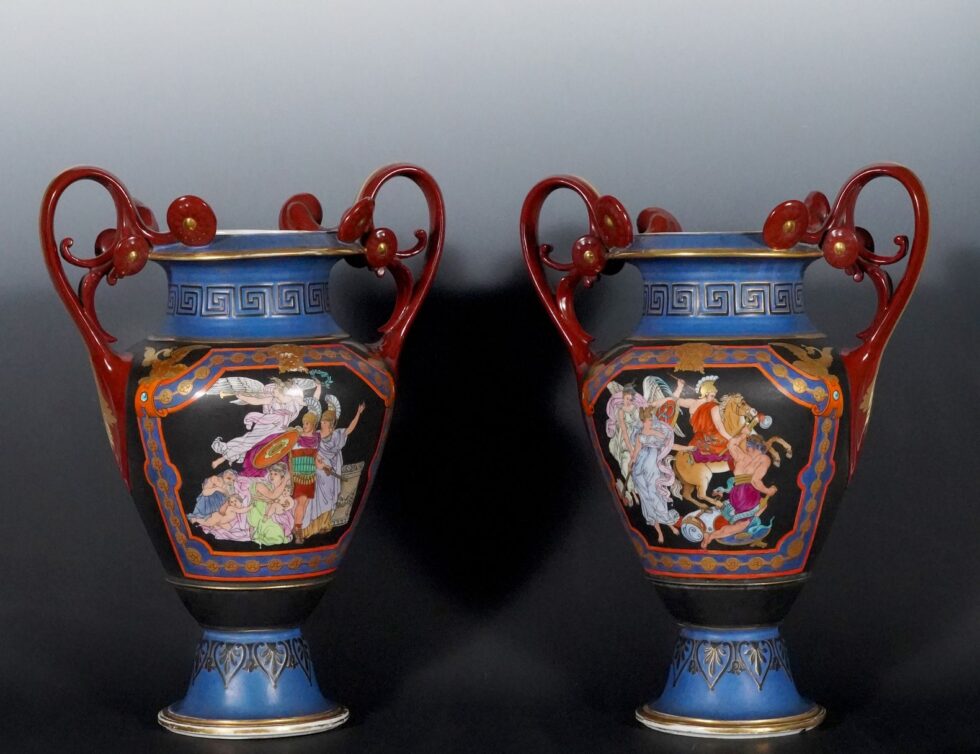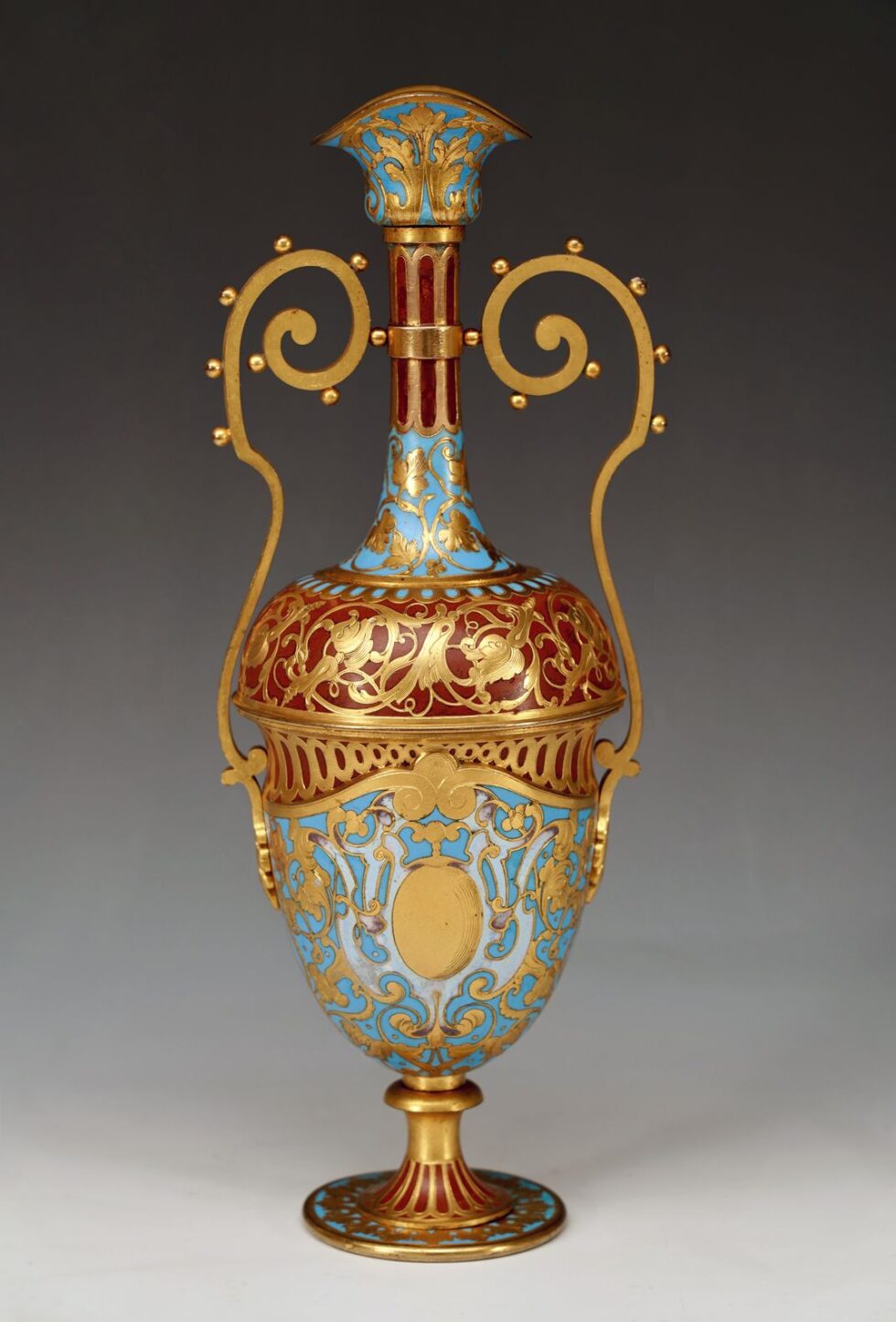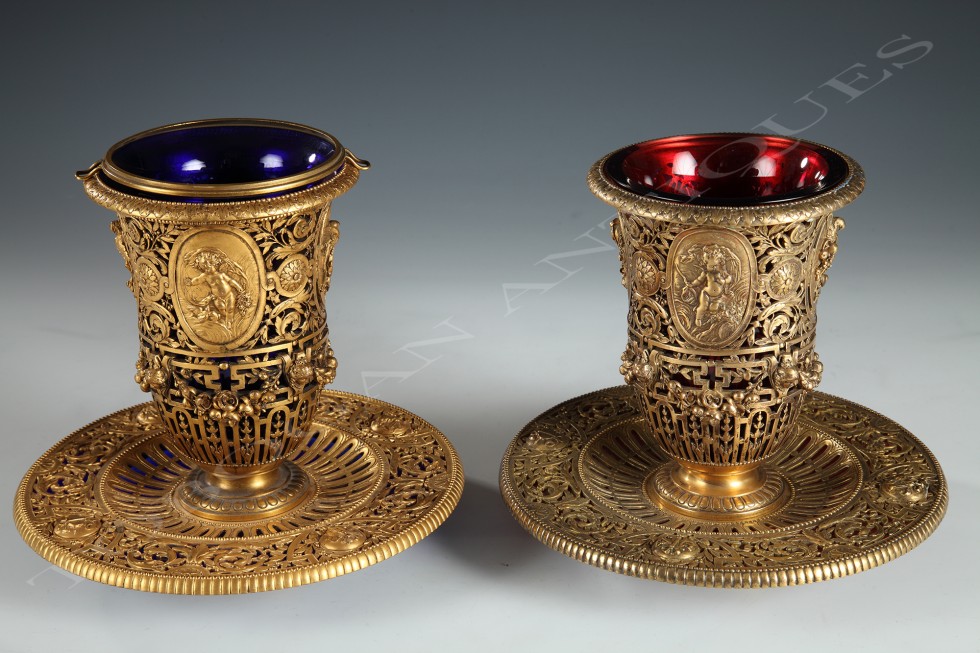ref. 1555
Pair of Chinese perfume burners
China
Late 18th-early 19th century (Qing dynasty)
Cloisonné enamel, gilt bronze
Height : 29 cm (11.4 in.) ; Diam. : 18 cm (7 in.)
A rare pair of Chinese polychrome cloisonné enamel jars in a gilt bronze mounting. The body is covered with geometric baffles and flowers and butterflies ornaments, relying on a tripod base with elephants’ heads. The whole is surmounted by a ying-long dragon cover on a gilt bronze circle, whose handles are jiao-long dragons.
commentary
Enamels are categorized by their production methods, there are « cloisonné », painted and « champlévé » enamels. Cloisonné enamel is made by first entwining strips of copper wire (cloisons) into desired patterns and pasting them on the vessel body. The, enamel frits of various colors are filled in the cavities. Another color, usually blue, is added to the outer areas as the background, and the vessel is kiln-fired. This process is repeated several times and the enamel is layered on until the desired thickness is achieved. The ware is completed after such procedures as polishing and plating with gold.
The techniques of Cloisonné wares were developped in China in early 15th century. In the early Ming dynasty (明朝 1368-1644), cloisonné enamels were already being used by imperial people. At the end of the Ming dynasty cloisonné enamels gained attention of scholars and appealed to officials.
At their beginning, cloisonné enamels were characterized by having decorations with lotus and petals, and by pure colors : blue, black, white, green, yellow. Vessel types were items like censers, boxes, cups, and vases. From the 16th –17th centuries, larger pieces with thin bodies and rich colors were manufactured ; the decoration were developed with animals, and others motifs which reflected the taoist influences. The manufacture of cloisonné enamels in the Qing dynasty reached its peak during the Qianlong period. Practical and decorative vessels in the shapes of various animals and figures were invented. Other vessel types included objects for daily use such as food and drinking containers, stationary articles, daily necessities, accessories… In the 19th century, following the Franco-English military campaign led in 1860 against the Imperial army in China, the French troops of Napoleon the IIIrd brought back from the Summer Palace, a part of the Chinese Imperial court treasure, which will make up the famous Chinese Museum of Empress Eugénie at the Fontainebleau Palace. Chinese cloisonné wares released then a new taste in Europe.
Contact us
Tobogan Newsletter
If you want to be up-to-date with our new acquirings you can sign up to our newsletter.

